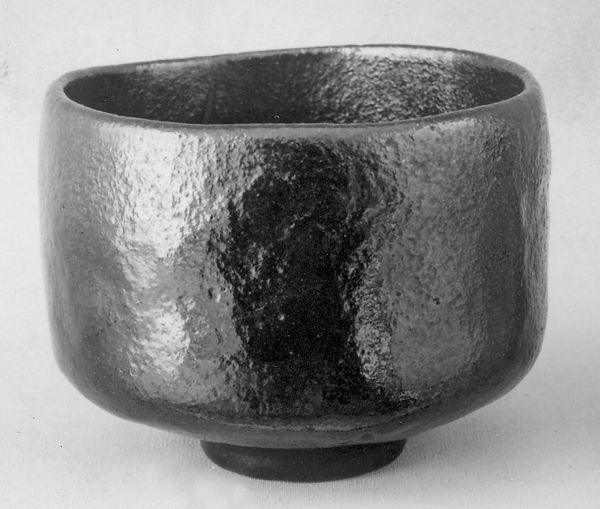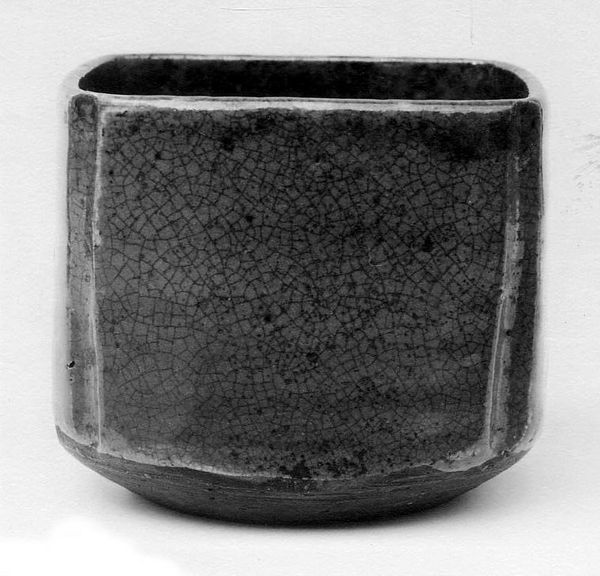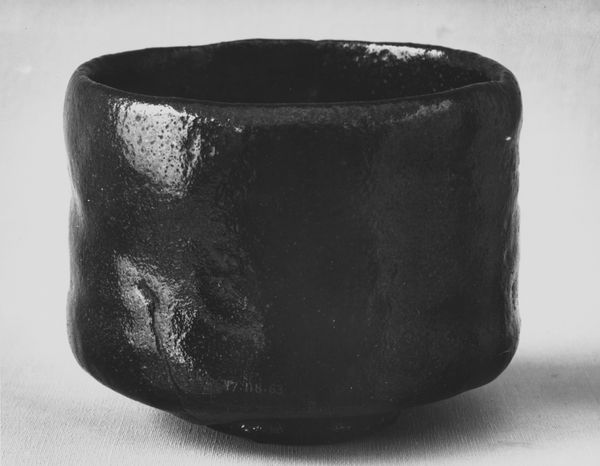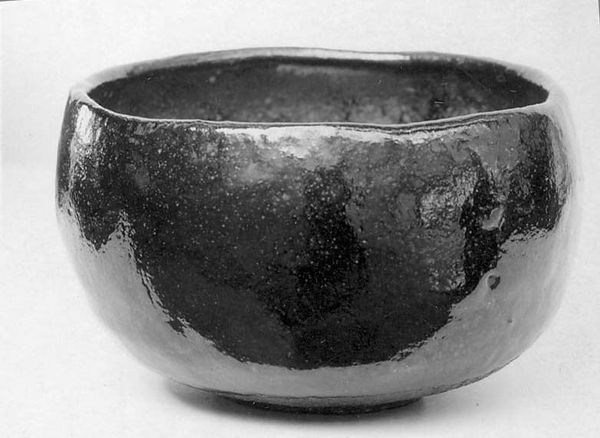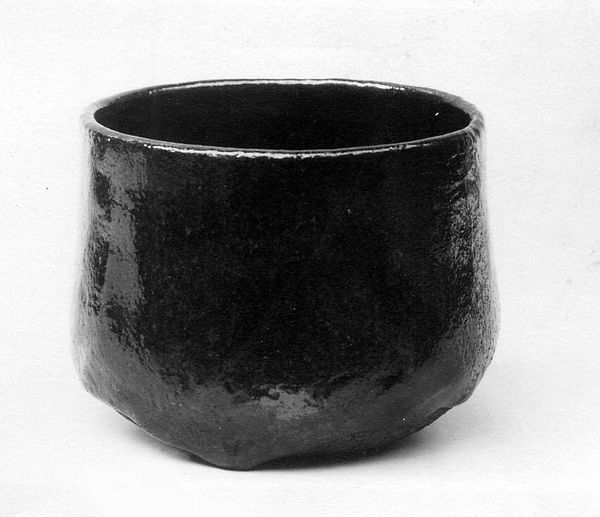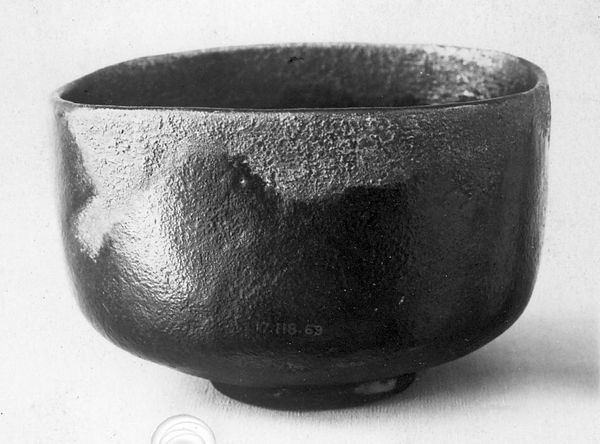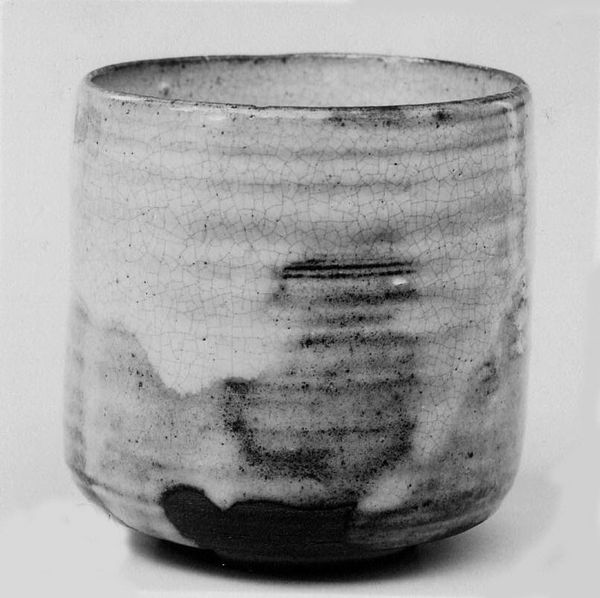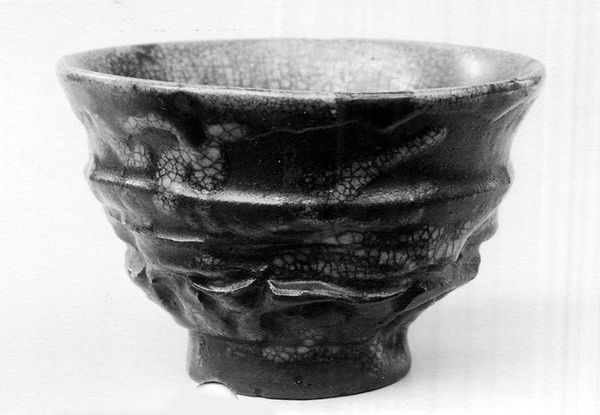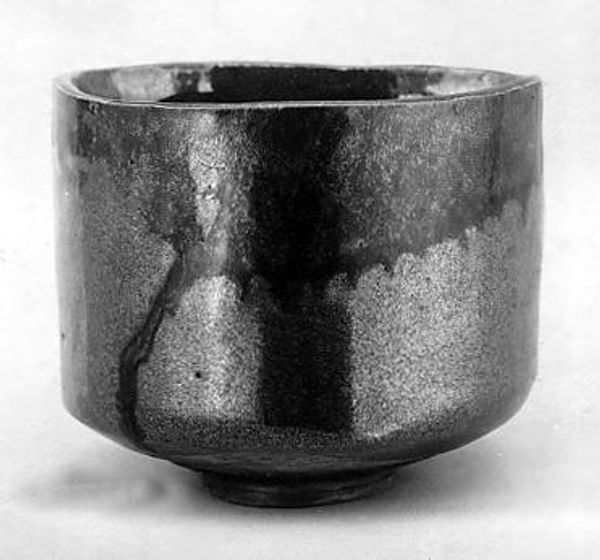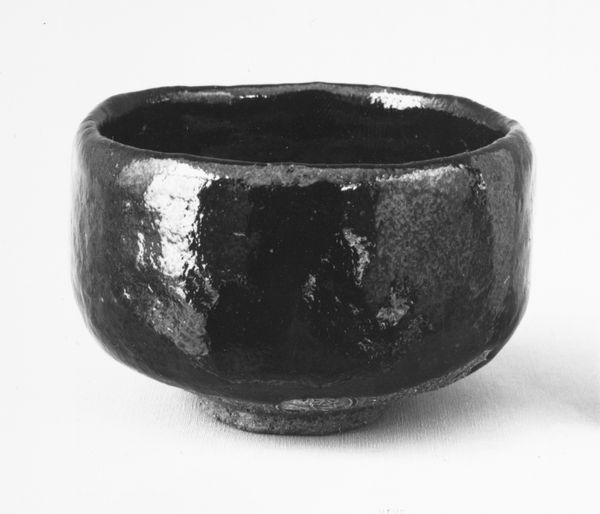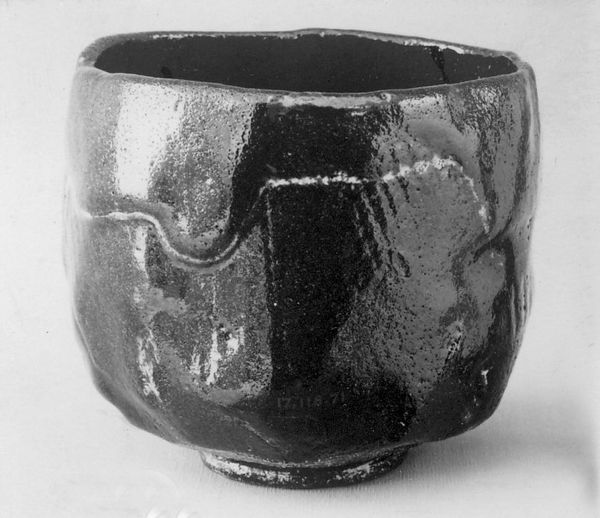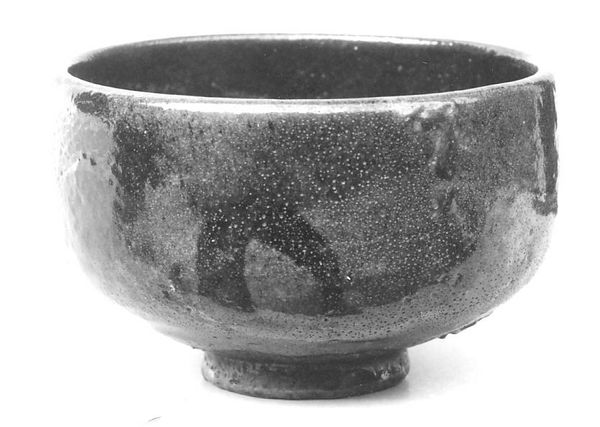
ceramic, wood
#
medieval
#
asian-art
#
ceramic
#
japan
#
stoneware
#
black and white
#
wood
Dimensions: H. 3 7/8 in. (9.8 cm); Diam. 5 in. (12.7 cm)
Copyright: Public Domain
Curator: Let's discuss this exquisite Japanese Teabowl by Hon'ami Kōetsu, crafted sometime between 1600 and 1633. It's a tangible piece of medieval Asian art history currently residing here at The Metropolitan Museum of Art. Editor: Well, my immediate reaction is its powerful presence. The texture alone draws you in, with this contrast between smooth, glazed patches and pitted stoneware. The monochromatic palette further enhances that tension; it feels simultaneously refined and rugged. Curator: Precisely. Its ruggedness actually speaks volumes about the cultural context. Think about the rise of the tea ceremony, or chanoyu, and its principles of wabi-sabi – finding beauty in imperfection and transience. The uneven surface, that irregular rim – those are not flaws, but rather expressions of naturalness esteemed in that period. Editor: Yes, that asymmetry creates dynamism. The light plays across the surfaces, and the silhouette itself almost dances before your eyes. You begin to see that asymmetry used for emphasis, especially where the glaze gathers, highlighting areas of texture and subtly guiding the gaze. It seems carefully considered despite its outward informality. Curator: That interplay of intention and chance is key to understanding Kōetsu’s work. The historical importance goes beyond its function as a vessel. Kōetsu was a prominent figure – an artist, calligrapher, and potter deeply involved in shaping the aesthetic values of his time. He helped popularize the concept of art infused with spirituality and informed by natural principles, all while being entwined with Japanese society's elite circles. Editor: I agree that is where formalism meets function. Kōetsu guides our perception using contrast in an intuitive experience, which ultimately, draws our eye in, guiding and reflecting the beauty he has manifested in a simple stoneware bowl. Curator: An eloquent way to frame the essence of it. These pieces offer much beyond aesthetics, they give an appreciation of the artistic legacy that formed culture. Editor: Quite. There's an elegance and deep significance that resides in this teabowl that has taught me much today, I appreciate that.
Comments
No comments
Be the first to comment and join the conversation on the ultimate creative platform.
